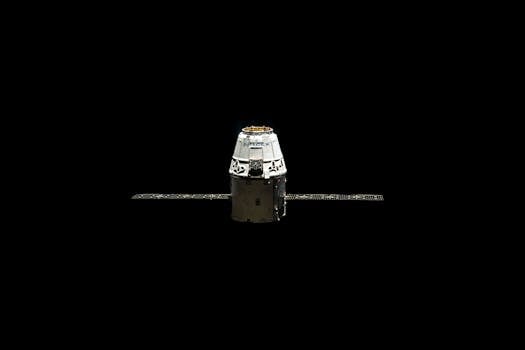
Satellite development has a rich and fascinating history, with significant milestones that have shaped the industry into what it is today. Satellite development began in the mid-20th century, with the launch of the first artificial satellite, Sputnik 1, by the Soviet Union in 1957. This historic event marked the beginning of the space age and paved the way for the development of modern satellite technology.
The early years of satellite development were characterized by intense competition between the United States and the Soviet Union, as both nations sought to explore and dominate space. The United States responded to Sputnik 1 with the launch of Explorer 1 in 1958, which was designed and built by NASA’s predecessor, the National Advisory Committee for Aeronautics (NACA). Explorer 1 was a significant milestone in satellite development, as it was the first satellite to detect the Van Allen Radiation Belt, a region of intense radiation surrounding the Earth.
The 1960s saw a surge in satellite development, with the launch of numerous satellites for communications, navigation, and weather forecasting. The first commercial communications satellite, Intelsat 1, was launched in 1965, and it marked the beginning of a new era in global communications. The 1970s and 1980s saw the development of more advanced satellite technologies, including geostationary satellites, which remain in a fixed position relative to the Earth’s surface.
In recent years, satellite development has continued to evolve, with the launch of numerous satellites for a variety of applications, including Earth observation, navigation, and communications. The development of small satellites, also known as cubesats, has made it possible for smaller organizations and countries to participate in satellite development and launch their own satellites into space. The use of WordPress has also become increasingly popular in the satellite industry, as it provides a flexible and customizable platform for building websites and managing content.
The history of satellite development is a rich and complex one, with numerous key milestones and innovations that have shaped the industry into what it is today. From the launch of Sputnik 1 to the development of modern satellite technologies, the satellite industry has come a long way, and it continues to evolve and grow. As we look to the future, it will be exciting to see how satellite development continues to shape our world and improve our daily lives.
Satellite development has also had a significant impact on our daily lives, from enabling global communications and navigation to providing critical weather forecasting and Earth observation data. The use of satellites has also enabled the development of numerous industries, including telecommunications, finance, and transportation. As the satellite industry continues to evolve, we can expect to see even more innovative applications and uses for satellite technology.
In conclusion, the history of satellite development is a fascinating and complex one, with numerous key milestones and innovations that have shaped the industry into what it is today. From the launch of Sputnik 1 to the development of modern satellite technologies, the satellite industry has come a long way, and it continues to evolve and grow. As we look to the future, it will be exciting to see how satellite development continues to shape our world and improve our daily lives.
The integration of satellite development with WordPress has also opened up new possibilities for the industry, enabling the creation of complex and customized websites and applications. As the satellite industry continues to evolve, we can expect to see even more innovative applications and uses for satellite technology, and the use of WordPress will likely play a significant role in this development.
Overall, the history of satellite development is a rich and fascinating one, and it continues to shape our world and improve our daily lives. As we look to the future, it will be exciting to see how satellite development continues to evolve and grow, and how it will be used to improve our world and enable new innovations and applications.
Some of the key milestones in satellite development include the launch of the first geostationary satellite, Syncom 2, in 1963, and the launch of the first GPS satellite, Navstar 1, in 1978. The development of the Internet and the widespread use of mobile devices have also driven the demand for satellite-based services, including broadband internet and mobile communications.
The use of satellite development in WordPress has also enabled the creation of complex and customized websites and applications, and has opened up new possibilities for the industry. As the satellite industry continues to evolve, we can expect to see even more innovative applications and uses for satellite technology, and the use of WordPress will likely play a significant role in this development.
The future of satellite development looks bright, with numerous new innovations and applications on the horizon. The development of small satellites, also known as cubesats, has made it possible for smaller organizations and countries to participate in satellite development and launch their own satellites into space. The use of WordPress has also become increasingly popular in the satellite industry, as it provides a flexible and customizable platform for building websites and managing content.
In terms of the key players in the satellite development industry, there are several major companies and organizations that are driving innovation and growth. These include SpaceX, Boeing, Lockheed Martin, and NASA, among others. The satellite industry is also becoming increasingly global, with numerous countries and organizations participating in satellite development and launch.
One of the most significant trends in satellite development is the increasing use of small satellites, also known as cubesats. These satellites are small, low-cost, and can be launched into space quickly and efficiently. They have numerous applications, including Earth observation, communications, and navigation. The use of cubesats has also enabled the development of new business models and applications, including satellite-based services and data analytics.
Another significant trend in satellite development is the increasing use of WordPress in the satellite industry. WordPress provides a flexible and customizable platform for building websites and managing content, and has become increasingly popular in the satellite industry. The use of WordPress has enabled the creation of complex and customized websites and applications, and has opened up new possibilities for the industry.
In conclusion, the history of satellite development is a rich and fascinating one, with numerous key milestones and innovations that have shaped the industry into what it is today. The integration of satellite development with WordPress has also opened up new possibilities for the industry, enabling the creation of complex and customized websites and applications. As the satellite industry continues to evolve, we can expect to see even more innovative applications and uses for satellite technology, and the use of WordPress will likely play a significant role in this development.
The satellite development industry is a complex and dynamic one, with numerous players and trends shaping its evolution. The use of WordPress has become increasingly popular in the satellite industry, as it provides a flexible and customizable platform for building websites and managing content. As the satellite industry continues to grow and evolve, we can expect to see even more innovative applications and uses for satellite technology, and the use of WordPress will likely play a significant role in this development.
The future of satellite development looks bright, with numerous new innovations and applications on the horizon. The development of small satellites, also known as cubesats, has made it possible for smaller organizations and countries to participate in satellite development and launch their own satellites into space. The use of WordPress has also become increasingly popular in the satellite industry, as it provides a flexible and customizable platform for building websites and managing content.
Overall, the history of satellite development is a rich and fascinating one, and it continues to shape our world and improve our daily lives. The integration of satellite development with WordPress has also opened up new possibilities for the industry, enabling the creation of complex and customized websites and applications. As the satellite industry continues to evolve, we can expect to see even more innovative applications and uses for satellite technology, and the use of WordPress will likely play a significant role in this development.
Introduction to Satellite Development
The history of satellite development is a complex and dynamic one, with numerous key milestones and innovations that have shaped the industry into what it is today. From the launch of the first artificial satellite, Sputnik 1, to the development of modern satellite technologies, the satellite industry has come a long way, and it continues to evolve and grow.
The early years of satellite development were characterized by intense competition between the United States and the Soviet Union, as both nations sought to explore and dominate space. The United States responded to Sputnik 1 with the launch of Explorer 1 in 1958, which was designed and built by NASA’s predecessor, the National Advisory Committee for Aeronautics (NACA).
Today, the satellite development industry is a global one, with numerous countries and organizations participating in satellite development and launch. The use of WordPress has become increasingly popular in the satellite industry, as it provides a flexible and customizable platform for building websites and managing content.
Key Milestones in Satellite Development
There have been numerous key milestones in the history of satellite development, from the launch of the first artificial satellite, Sputnik 1, to the development of modern satellite technologies. Some of the most significant milestones include the launch of the first geostationary satellite, Syncom 2, in 1963, and the launch of the first GPS satellite, Navstar 1, in 1978.
The development of the Internet and the widespread use of mobile devices have also driven the demand for satellite-based services, including broadband internet and mobile communications. The use of WordPress has enabled the creation of complex and customized websites and applications, and has opened up new possibilities for the industry.
The future of satellite development looks bright, with numerous new innovations and applications on the horizon. The development of small satellites, also known as cubesats, has made it possible for smaller organizations and countries to participate in satellite development and launch their own satellites into space.
The Role of WordPress in Satellite Development
The use of WordPress has become increasingly popular in the satellite development industry, as it provides a flexible and customizable platform for building websites and managing content. The integration of satellite development with WordPress has enabled the creation of complex and customized websites and applications, and has opened up new possibilities for the industry.
The satellite development industry is a complex and dynamic one, with numerous players and trends shaping its evolution. The use of WordPress has become a key part of this evolution, enabling the creation of complex and customized websites and applications, and driving innovation and growth in the industry.
As the satellite development industry continues to grow and evolve, we can expect to see even more innovative applications and uses for satellite technology, and the use of WordPress will likely play a significant role in this development. The future of satellite development looks bright, and the use of WordPress will be an important part of this future.
Conclusion
In conclusion, the history of satellite development is a rich and fascinating one, with numerous key milestones and innovations that have shaped the industry into what it is today. The integration of satellite development with WordPress has also opened up new possibilities for the industry, enabling the creation of complex and customized websites and applications.
As the satellite development industry continues to evolve, we can expect to see even more innovative applications and uses for satellite technology, and the use of WordPress will likely play a significant role in this development. The future of satellite development looks bright, and the use of WordPress will be an important part of this future.





